Despite the helpful efforts of CBC’s Island Morning, the local Newcap stations, Facebook and this here blog, the important part of my Golding Jobber Letterpress that, it seems, fell off the truck in transit from Tryon to Charlottetown, is, it seems, not to be found.
So, onward we go. Fortunately my Cousin Sergey, in Charlottetown for three months to learn English, happens to be a trained metallurgist, fabricator, and jack-of-all-trades. He valiantly jumped into the breach, preparing, without benefit of proper tools or facilities, the measurements required to have a replacement part fabricated:
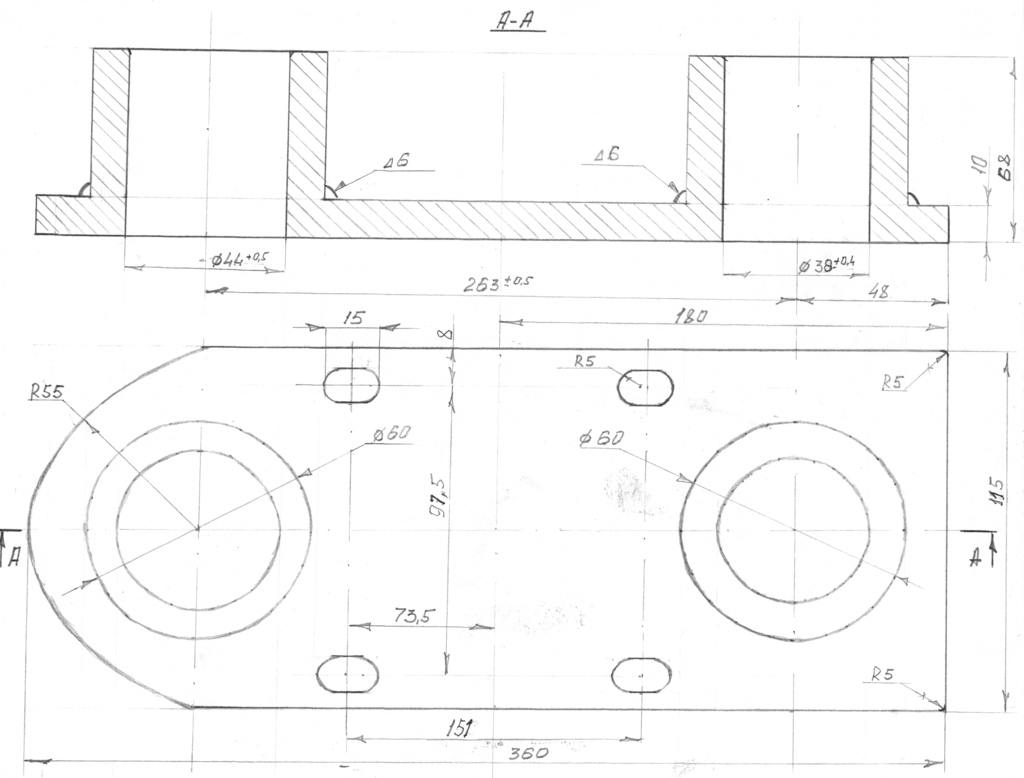
In Canada the saying goes “measure twice, cut once.” In Ukraine, Sergey tells me, the saying is “measure seven times, cut once.” And so we’ve made several visits to the Golding Jobber’s new home in the basement of The Guild, equipped with rulers and calipers, to measure and compute and re-measure.
To help double-check our approach, I contacted the ever-helpful John Falstrom in Connecticut, the nexus of the Golding press universe, to see if he knew of someone else with a Golding Jobber No. 8. It turns out that John knows of only one other, owned by Gota Tryckkammaren in Sweden; I’ve dropped her a line with hopes that she might do some measurements of the part we’re looking to replace.
On Wednesday night Sergey and I drove up to Kensington Metal Products to discuss the fabrication itself; they made a couple of helpful suggestions, and are ready to go as soon as I give the word.
So, in theory, I should be printing before Christmas.
It seems that an important part of my Golding Jobber letterpress is missing. As it was on the press when we started moving it, it’s likely, because it wasn’t firmly bolted on, that it went missing somewhere between Tryon and Charlottetown, rattling off the press and perhaps onto the side of the road.
It’s a flat piece of iron, about 18 inches long, with 4-6 bolt holes and two larger holes.
On the off chance that you found it, and have been holding on to it in anticipation of someone looking for it, here’s a couple of pictures showing the part. If you’ve found it, please let me know!
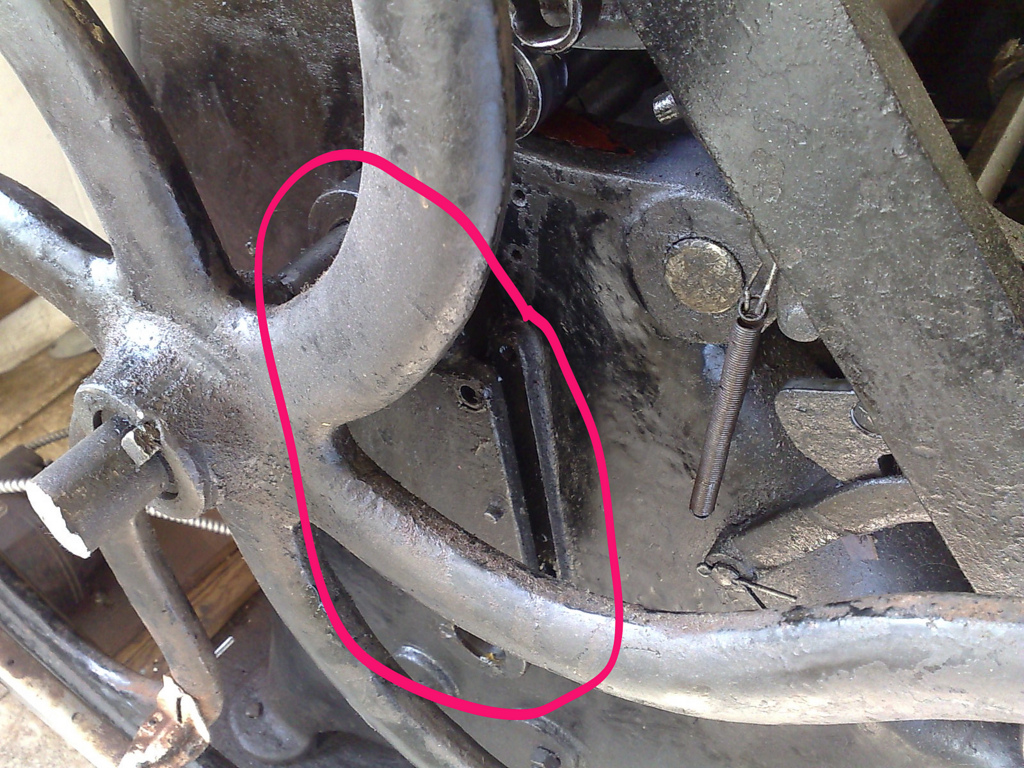
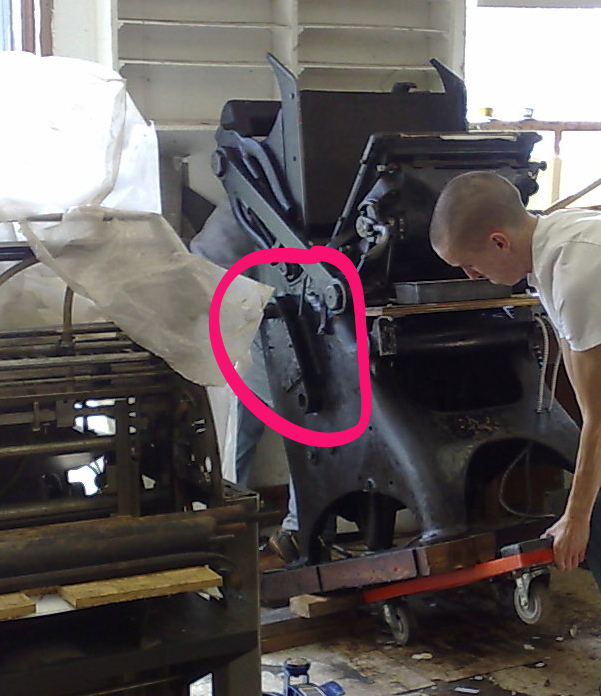
I didn’t notice until a couple of days ago that the counter that’s bolted to the top of my new letterpress is, in fact, a Potato Acreage Calculator made in Fort Kent, Maine by the Morin’s company.
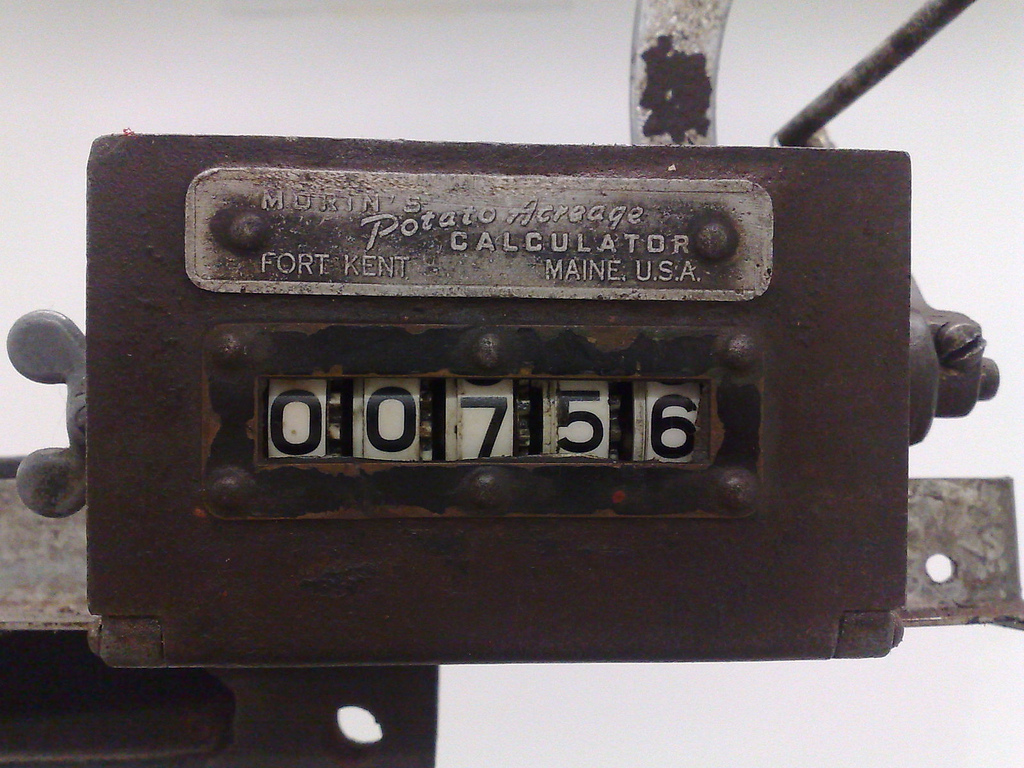
On Saturday night I arrived at The Guild with a full kit: toolbox, varsol, paper towels, rags, and a giant sledge hammer (purchased from Rogers Hardware on the day they closed for good many years ago). On the other side of the basement there was a gaggle of well-dress patrons of the arts sipping wine and admiring paintings during the intermission of The Attic, The Pearls and Three Fine Girls, something seemingly at odds with my plans for sledge hammering, but I was assured, on assuming my tenancy, that the building is soundproof enough for this not to be an issue.
After an hour of heaving and shoving and sledging, I ended up with the press reassembled:
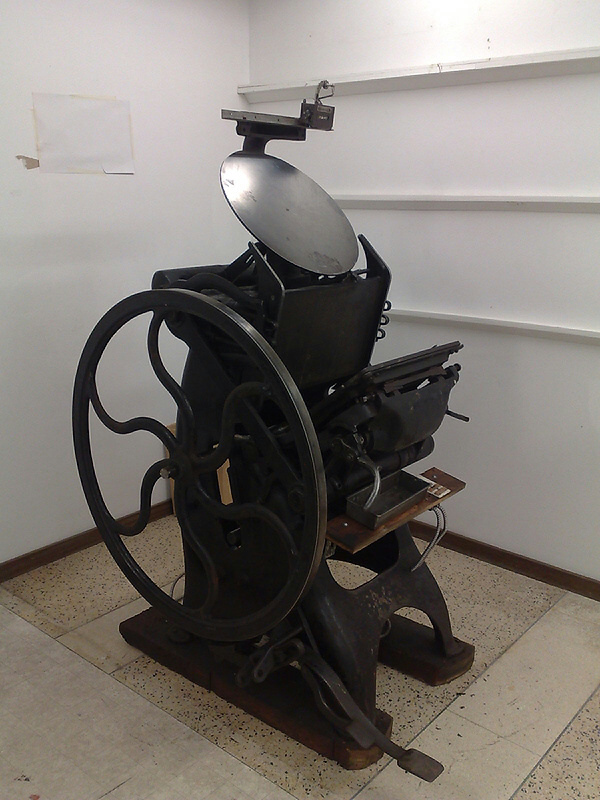
I reattached the flywheel and the ink disk and its supporting arm as well as the foot-pedal brake (I have to talk to Ian Scott about making me up some sort of leather add-on for the brake to prevent metal-on-metal braking).
There’s an issue I need to figure out with the flywheel and its axel: things aren’t running as freely as they should and I think it’s because the axel needs to be moved further to the right; to do this properly, however, I need a way of shifting the position of the small gear on the press’s righthand side further onto the axel. I’m sure there’s a way of doing this, but my digital mind is at its limits; fortunately Cousin Sergey is a metalurgist and jack-of-all-trades and I’m hoping he can help.
Not too far from the point where I’ll be able to start printing…
Remember how I told you that my letterpress has found a home in the basement of The Guild? Well Catherine reminded me this morning that soon after arriving in Prince Edward Island back in the early 1990s she was on the board of the PEI Council of the Arts when the building now known as The Guild was being acquired from the Royal Bank.
Catherine and Ron Arvidson (see his sundial on the side of Charlottetown City Hall) were on the committee that was responsible for laying out the selfsame basement.
So, in other words, Catherine has my back to the extent that she preemptively arranges for suitable space to become avaialble to me 15 years in advance.
Thank you.
You may recall that when we last spoke my Golding Jobber letterpress had made it from Tryon to Clyde River — half way along its journey to town. It’s taken me almost a month to get it the rest of the way.
First, I needed to find a space. After a tour of what seemed like every light industrial space south of Allen Street, I finally made arrangements to share a space in the basement of The Guild and so with the space identified the next challenge was to get the press from Clyde River to town.
Fortunately my friend Tom Cullen at Purity Dairy heard my call for help and pointed me toward Austin McQuaid on Allen Street. Everyone thinks of McQuaid’s as a place to store things, but they’re in the moving business too, and Tom has used them over the years when he too has had heavy things to move around.
I gave Austin a call last week and he and his son met me at The Guild to see if it was something they could handle; I showed him a photo of the press, and he came up with a plan and asked that I arrange to have Griffin’s Towing in Clyde River move the press into his warehouse on Allen Street so they could prepare for the move into The Guild.
The press arrived at McQuaid’s yesterday afternoon and this morning at 8:30 a.m. I had an email from Kay in Austin’s office telling me they’d be at The Guild at 9:00 a.m. I made sure that the doors would be open and then headed down to guide them where to set it down.
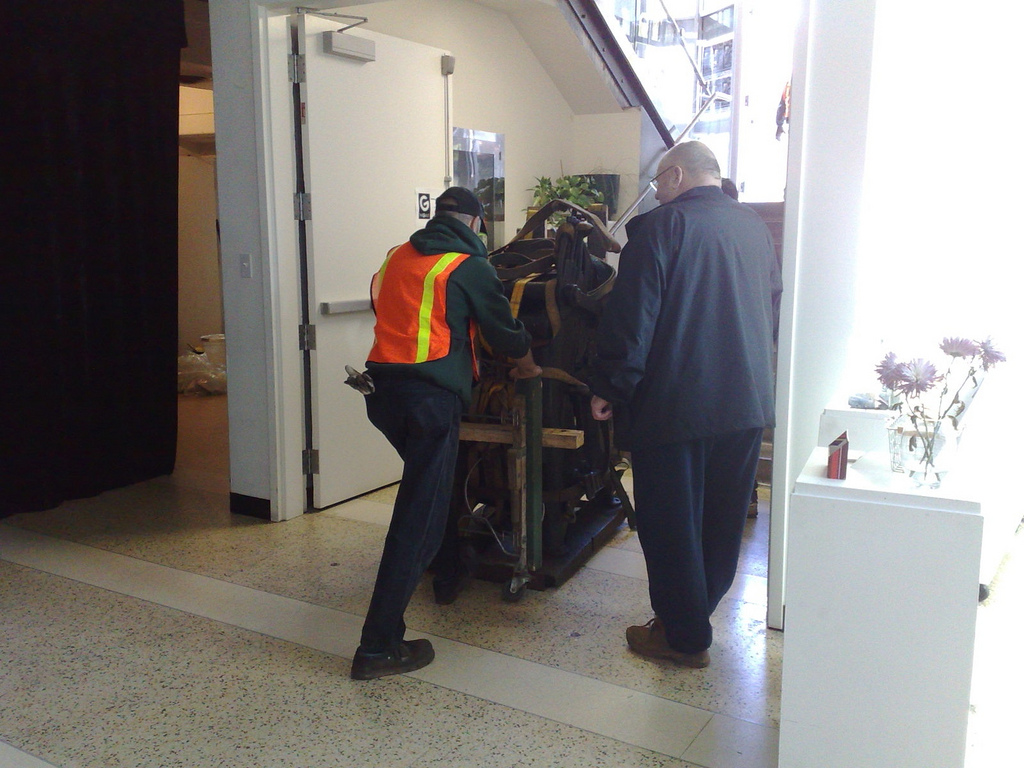
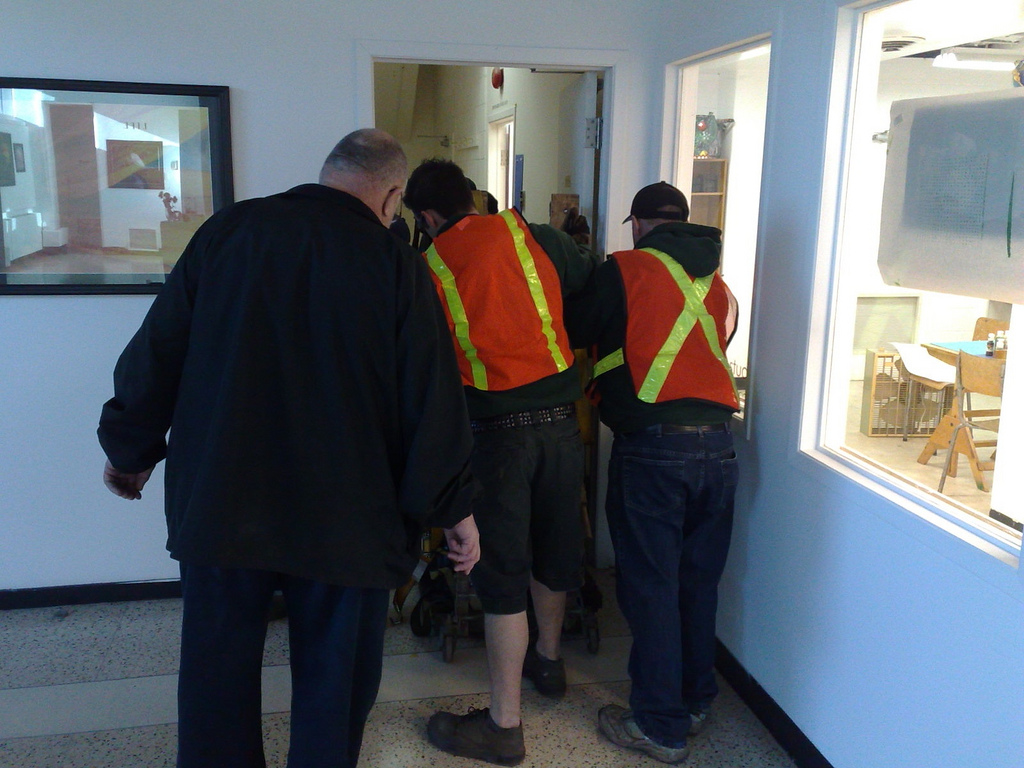
By the time I arrived at The Guild 15 minutes later they had the press out of their trailer, in the front door and down the front stairs; just as I arrived their forklift was driving out of the front door of the building. Ten minutes later they had the press on a piano sledge and five minutes after that it was set down into place.
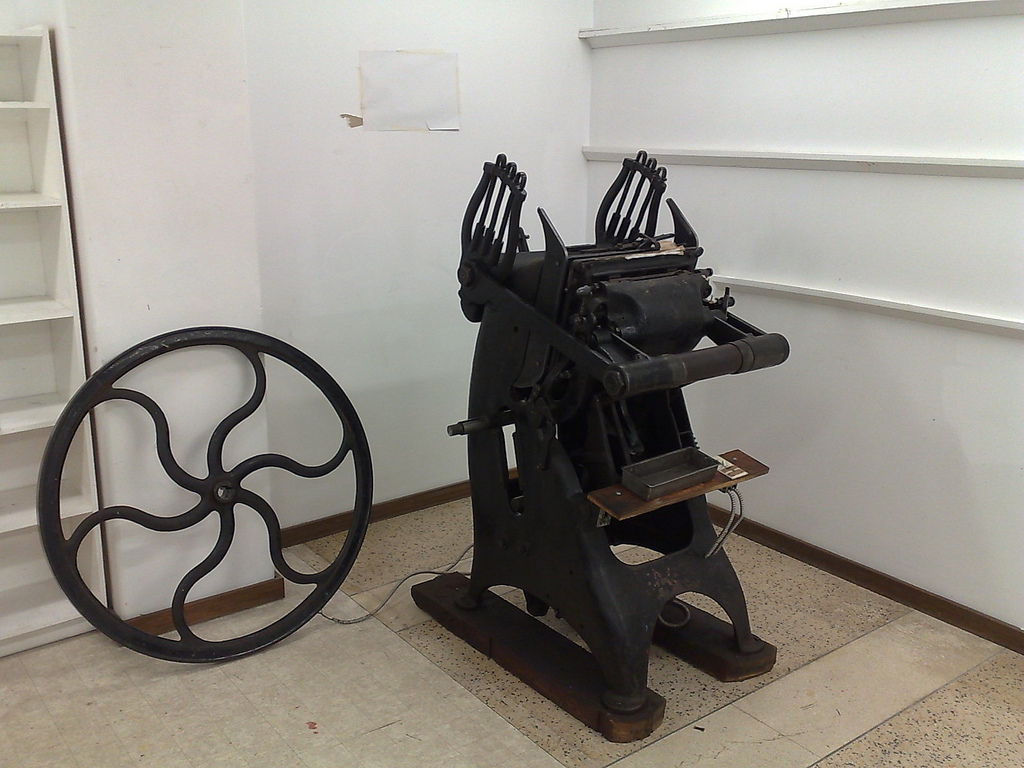
Austin brought a full team to the move and they were all the most good-natured, professional guys you’d ever meet: I can’t imagine a better moving team. If you got something heavy to move on PEI, I wholeheartedly recommend them.
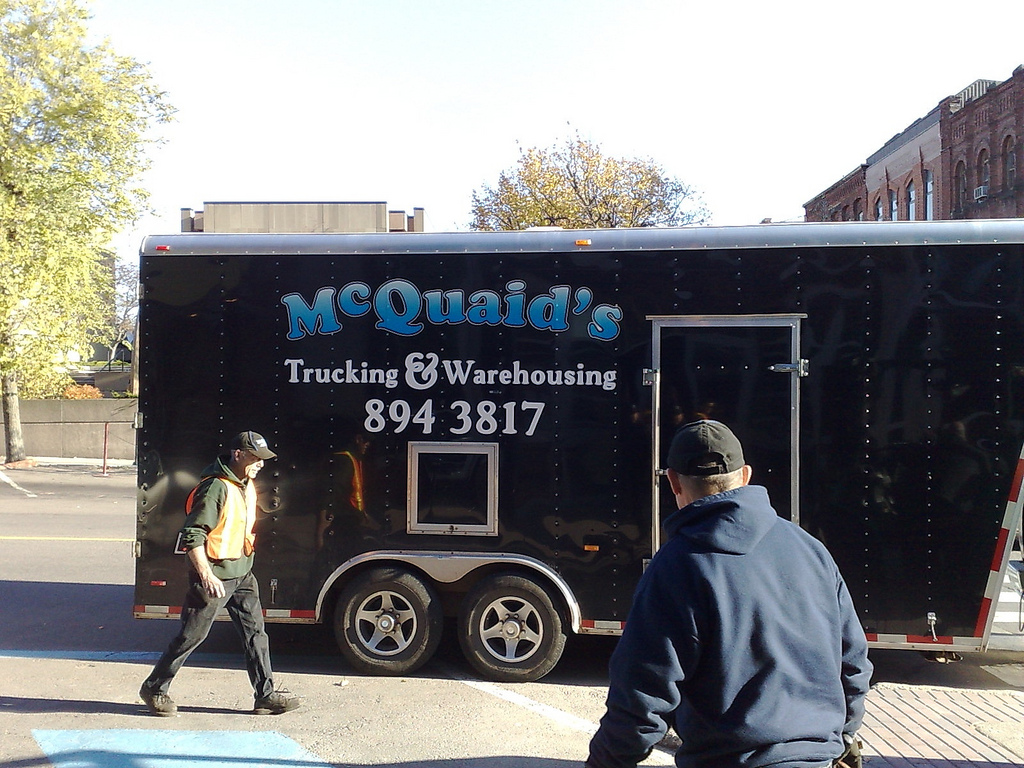
At every step of this two-month process each new person to encounter the press adds a couple of hundred pounds to their guess of how much it weights: Bill Campbell, the previous owner, guessed it was about 800 pounds; the next mover thought it was more like 1,000 pounds and Austin was pretty sure it was more than that (one of his men estimated 1,725 with a twinkle in his eye).
On my way out the door this morning Catherine handed me a business card from our electric meter reader; he’d knocked on the door of our house yesterday looking for information about the Blueline Power Cost Monitor that’s strapped to our meter and wanted me to give him a call.
We spoke on the phone for 5 minutes this morning and any fears I might have had — “look, you can’t just go strapping unauthorized equipment to your electric meter” — were immediately assuaged: he just wanted to know where I got the monitor, what kind of information it gave me, and how much it cost me. He was just curious, in other words.
It’s nice to have an electric company with employees like this.
The Social Graph is Neither, an essay by Maciej Ceglowski on the Pinboard Blog lays out eloquently many of the thoughts about current Internet trends that I’ve intuitively felt for a long time but have never been able to express; the essay deserves to be read in its entirety, but in you want to skip ahead to the punchline, for me it is this:
Social networks exist to sell you crap. The icky feeling you get when your friend starts to talk to you about Amway, or when you spot someone passing out business cards at a birthday party, is the entire driving force behind a site like Facebook.
Because their collection methods are kind of primitive, these sites have to coax you into doing as much of your social interaction as possible while logged in, so they can see it. It’s as if an ad agency built a nationwide chain of pubs and night clubs in the hopes that people would spend all their time there, rigging the place with microphones and cameras to keep abreast of the latest trends (and staffing it, of course, with that Mormon bartender).
There much more in the essay, including a cogent argument for, as the title says, “the social graph is neither.” Go read it.
Pachube, the “plumbing system for the Internet of Things,” has widened the range of services it offers at no charge. This means, among other things, that a much longer data trail is now available from their API and otherwise. For example, here’s 6 month’s worth of PEI-New Brunswick Energy Interchange:
)
And here’s the same data, but for the past week:
)
Because those graphs are coming from Pachube’s web service, they are always up to date, meaning that if you’re reading this blog post in 6 months, then you’re still looking at “the last six months” and “the last week” of data.
 I am
I am